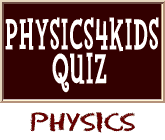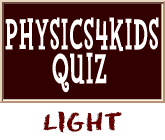Pull out Your Pointers
Finally, high tech stuff! Lasers aren't so high tech anymore. Lasers have been around since the 1960's. You probably even know someone who has one of those laser pointers. A laser is just a really powerful beam of light. Those laser pens aren't big on power. However, some lasers in satellites can focus a beam anywhere on the planet. That's powerful. Lasers are even used for tests in fusion reactions. Laser isn't a word but an acronym. It stands for LIGHT AMPLIFICATION by STIMULATED EMISSION of RADIATION.Exciting Atoms
The amount of light normally given off by an atom is increased or exaggerated (stimulated). To make the light even stronger, the source atoms are special and are selected to give off only one wavelength of light. That's why it's usually one color. All of these effects work together to make the light well defined and very focused. You'll find lasers every day in medical offices, universities, and construction. How about this acronym: A REALLY STRONG LIGHT CREATED by EXCITED ATOMS? RSLCEA? It doesn't quite flow off your tongue, does it? Better stick with laser.Lasers don't start with a light bulb and a magnifying glass. It's all about energy levels. We've got a picture of the rough set up. The atoms are excited by a flow of electricity. When the atoms are excited, they increase in energy. When the energy in the atoms drops, photons are released. And bang! Light. Okay, we admit it's not that simple, but it does give you the basic ideas.
Remember the description of the acronym "LASER" and the term "stimulated emission?" The idea is that you pump energy into the laser and push electrons to higher energy levels. Then you stimulate them to change to a lower energy level and release of energy/photons. The released photons are reflected back and forth, and on each pass, more photons are added. That's the whole "amplification" part of the word laser. You start with one photon, pump in energy to excite an atom, and when the atom returns to its original energy level, it releases an additional photon (now there are two photons). Repeat as needed. When you get the desired number of photons, release them all in one burst.
Or search the sites for a specific topic.
LLCD Downloads the Future (NASA/GSFC Video)

Useful Reference Materials
Encyclopedia.com:http://www.encyclopedia.com/topic/laser.aspx
Wikipedia:
http://en.wikipedia.org/wiki/Laser
Encyclopædia Britannica:
http://www.britannica.com/EBchecked/topic/330874/laser






